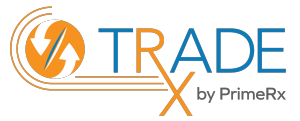Is Increased Government Regulation the Answer for High Drug Cost?
The Pharmaceutical industry is a highly regulated submarket in terms of what drugs get approved for national, safe, and legal consumption, however, drug pricing still remains mostly a free market. There have been some proposals to drug cost regulation, such as Clinton’s 1993, Health Security Act. Its purpose was keep pharmaceutical price increases below or steady at the average consumer price inflation. This resulted in pharmaceutical companies pledging to do so. The House Bills 2951 and 3486, discussed in an earlier post are two other proposals that focus on lowering drug prices through capitation and cost transparency. Some even propose we adopt the highly stringent regulations of the European Union (E.U.) that has increased control over drug prices since the 1980’s.
Would E.U. Price Regulations Work In The U.S.?
A 19-year sample period study was done that compared the pharmaceutical drug price regulations of the E.U. and the U.S. It’s easy to see why price control would benefit the patient in the short term, due to them saving money and being able to afford their medications. What about the long term benefits? Are there any potential risks to patients in the long term? Something to consider regarding drug price regulation is, “price constraints affect the profitability, stock returns, and R&D [research and development] of E.U. and U.S. firms. Had the U.S. used controls similar to those used in the E.U., a study estimates it would have led to 117 fewer new medicines and 4,368 fewer research jobs in the U.S.” (Golec & Vernon, 2010) during the 19 year study.
This proposes an interesting viewpoint for patients, U.S. economy, and the U.S. being a leader in R&D. Should the Government increase their regulation over the Pharma industry? A study published this week by PublicAgendaArchives.org shows that over 50% of Americans say there’s not enough government regulation when it comes to prescription drugs, 39% about right, 8% say too much, and 3% had no opinion. USNews.com also reported this week “so far in the U.S., we have not been willing to run the risk of government regulation of drug pricing, just because there are so many conflicting interests and no bright line to lead government officials to choose a better price.”
Office of Pharmacy Affairs’ 340B Drug Pricing Program:
Programs like the Office of Pharmacy Affairs’ 340B Drug Pricing Program where drug manufacturers are required to provide outpatient drugs to eligible non-profit entities at significantly reduced prices to stretch scarce Federal resources as far as possible could be implemented at many levels of the Pharma supply chain, including specific programs focused solely on independent pharmacies. This allows them to reach more eligible patients and provide more comprehensive services.
The Federal government is not the only one trying to balance a checkbook and make the best of each dollar spent, if they can create programs for themselves, they can do the same for us! They have the power to create change. Will they take action? Who will lead the way? We are waiting! Stay tuned! The next few years with price transparency and big data being on the forefront change is inevitable.
References:
Golec, J., & Vernon, J. (2010). Financial effects of pharmaceutical price regulation on R&D spending by EU versus U.S. firms. PharmacoEconomics, 28 (8). 615-628.
